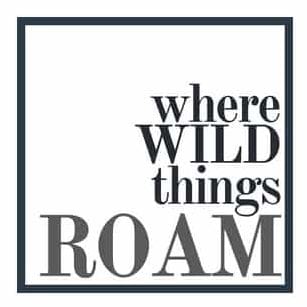Tips for climbing Mt Kilimanjaro
Nestled majestically in Tanzania, East Africa, Mount Kilimanjaro stands as the continent’s highest peak, a monumental invitation to adventurers and climbers seeking to conquer its legendary summit.
Rising to an impressive elevation of 19,341 feet (5,895 meters) above sea level, Kilimanjaro isn’t just a mountain; it’s an emblem of nature’s grandeur, drawing enthusiasts from across the globe to its snow-capped summit and diverse ecosystems.
What sets Kilimanjaro apart is its accessibility, making it one of the world’s most sought-after climbing destinations. Situated near the town of Moshi in Tanzania, this solitary free-standing volcanic massif lures climbers with its allure of challenge and natural beauty. Its iconic snow-capped peaks, glistening glaciers, and varied landscapes—from lush rainforests to alpine deserts—create an enchanting tapestry that captivates adventurers.
The allure of the climb

The allure of conquering Kilimanjaro lies not just in its impressive height but in the diversity of experiences it offers. Climbers embark on a multi-day trek that transitions through five distinct climatic zones, each presenting its own unique terrain and flora. The challenge lies in navigating these zones, from the verdant rainforests teeming with life to the alpine desert where the landscape transforms into an otherworldly expanse of rock and ice.
Moreover, Kilimanjaro’s draw extends beyond seasoned climbers. Its non-technical routes make it accessible to adventure-seekers with moderate fitness levels, allowing individuals from various walks of life to attempt the ascent to Uhuru Peak, the mountain’s highest point and the ultimate reward for climbers.
Breaking down the Climbing Routes

Kilimanjaro offers several routes, each with its own character, difficulty level, and scenic allure. The Marangu Route, also known as the “Coca-Cola” route, is the most popular and accommodates climbers in huts along the way. The Machame Route, dubbed the “Whiskey” route, is favoured for its scenic beauty and varied landscapes. Other routes like Lemosho, Rongai, and Northern Circuit offer alternative experiences, allowing climbers to choose based on preferences for duration, difficulty, and scenery.
How to choose the right route for you
Climbing Kilimanjaro requires thorough preparation and consideration of various factors. Acclimatization is key, as altitude-related challenges can pose risks. Adequate physical fitness, proper gear, and choosing the right tour operator for guidance and logistics are crucial aspects to ensure a safe and successful ascent.
Choosing the right route for climbing Mount Kilimanjaro is crucial for several reasons:
Physical ability and experience
Different routes vary in terms of difficulty, length, and altitude gain. It’s important to choose a route that matches your physical fitness level and hiking experience to ensure you can safely and comfortably complete the climb.
Acclimatisation
Altitude acclimatization is a key factor in successfully summiting Mount Kilimanjaro. Some routes, like the Lemosho and Machame routes, are longer and allow for better acclimatization due to their gradual ascent profiles (Climb high & Sleep low). It’s important to choose a route that provides adequate time for your body to adjust to the altitude, reducing the risk of altitude sickness and increasing your chances of reaching the summit.
Scenery and experience
Each route offers unique landscapes and experiences. The Machame route, for example, is known for its stunning scenery and varied terrain, while the Marangu route is sometimes called the “Coca-Cola” route due to its popularity and simpler amenities. Consider what type of experience you want to have and choose a route that aligns with your preferences.
Crowds versus solitude
Some routes tend to be more crowded than others, especially during peak climbing seasons. If you prefer a quieter, more solitary experience, you might want to choose a less popular route, such as the Rongai or Northern Circuit routes.
Ultimately, the right route for you will depend on your physical condition, hiking experience, acclimatization needs, personal preferences, and the type of experience you seek. It’s important to research and consider these factors carefully before selecting a route for your Kilimanjaro climb. Our team has vast experience and are always available to guide you on the route to choose.
What to consider when booking on the trek
When booking clients on a trek, such as a climb up Mount Kilimanjaro through African Scenic Safaris, travel agents should consider several important factors to ensure the safety, comfort, and satisfaction of their clients. Here are some key considerations:
Commitment to Responsible Tourism
In the context of the tourism industry, particularly in developing regions, there is a growing awareness of the need for ethical and impactful practices beyond simple “green” initiatives. The International Mountain Explorers Connection (IMEC) and its Kilimanjaro Porters Assistance Project (KPAP) have been advocating for ethical practices within Tanzania’s tourism sector for over 20 years. They aim to raise awareness among tourists and travel partners about the impact of choosing ethical business partners and suppliers. In Tanzania, around 300 local operators are offering Kilimanjaro climbs, and climbers must understand the less discussed aspects of the industry. Many porters and mountain crews face exploitation and poor working conditions, despite the opportunity for operators to engage in a voluntary monitoring process that could improve their operations and credibility.
Fitness and Experience
It’s essential to assess your fitness level and trekking experience. Different routes up Mount Kilimanjaro vary in difficulty, so matching the route to your abilities is crucial for a successful and enjoyable trek.
Acclimatisation Needs
You should understand the importance of altitude acclimatization and choose routes that allow for proper adjustment to higher altitudes. Climbers with more time for acclimatization are more likely to reach the summit and have a positive experience.
Route Selection
As mentioned earlier, different routes offer different experiences, scenery, and levels of difficulty. Agents should consider the preferences of their clients and select a route that aligns with their interests and expectations.
Guide and Support Services
Assess the quality of the guiding and support services provided by the tour operator. Ensure that the chosen company has a strong track record of safety, experienced guides, and quality equipment to support the trek.
Safety and Risk Management
Understand the potential risks associated with high-altitude trekking and ensure that the tour operator has proper safety measures in place. This includes emergency evacuation plans, first aid training for staff, and adherence to safety regulations.
Comfort and Amenities
Consider the level of comfort and amenities you desire. Some operators offer more basic camping experiences, while others provide more luxurious climbs. Understanding your preferences will help in selecting the right trekking package.
Weather and Season
Consider the time of year the trek will take place. Different seasons can affect the weather conditions and the overall trekking experience. Tour operators can provide you with information on the best times to trek based on your preferences and expectations.
Preparation and Gear
It is important to know the necessary physical preparation and gear required for the trek. A checklist of essential items and recommended training regimens can help ensure you are adequately prepared for the challenge. You can find a gear list here.
By considering these factors, you can make informed decisions when booking clients on a trek, ultimately enhancing the overall experience and increasing client satisfaction.
Beyond the mountain

Beyond the climb, Tanzania’s rich cultural heritage and natural marvels beckon climbers to explore further. A visit to nearby national parks like Serengeti and Ngorongoro Crater, renowned for their wildlife and breathtaking landscapes, offers a well-rounded experience for adventurers.
Climbing Mount Kilimanjaro isn’t just a physical endeavour; it’s a transformative journey through diverse ecosystems and unparalleled natural beauty. It beckons adventurers to test their limits, embrace the challenge, and savour the reward of standing atop Africa’s highest peak—a testament to human resilience and the magnificence of nature. For those seeking an unforgettable adventure, Kilimanjaro stands tall, inviting climbers to conquer its summit and etch their mark on its storied slopes.






